|
This information sheet is a continuation of Part One.
We typically place a small amount of grass hay in the far end of the squeeze. The hay is not generally useful as bait, but it can sometimes distract and calm a horse once he's locked inside the squeeze.
"Loading" the horse.
We generally quietly "sweep" the horse into the squeeze opening by creating a moving "human wall." Usually the horse will go right into the squeeze. If the horse is difficult the "human wall" can be reinforced with construction netting.
During this procedure it is critical to keep all other persons away from the squeeze so that the horse doesn't feel any adverse pressure while entering the opening.
Sweeping" the horse into the squeeze.
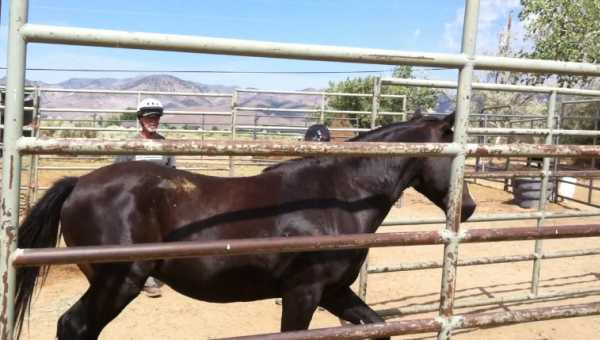
Once the horse is in the squeeze, personnel stand in the general area of the opening to passively discourage the horse from coming out. When closing the squeeze panel opening, it is important to not block the opening with your body, and to also not directly face the panel, but rather stand slightly to the side. If the horse does bolt out you don't want to get run over or have the panel strike your knees!
Closing the opening, which then gets chained to the round corral.
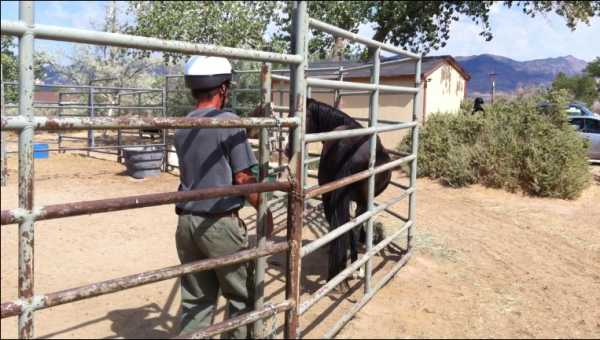
The moving end of the squeeze chute is chained to the horizontal railings of the round pen since it will have to slide along the round pen panel as the squeeze is made narrower.
The squeeze can be drawn partially tighter by carefully pushing the inside panels toward the round pen panels. This maneuver should never be attempted while facing panels that aren't secured with a twisted tension rope. Facing the horse can make the horse more anxious. Facing the panels puts your knees in jeopardy if the horse suddenly reacts and shoves the panels outward.
The panels can be secured by passing a rope through the squeeze, running it back, then twisting it tightly around itself. The twists will hold the rope fast if the horse gets agitated, but the restraint can be released by simply dropping the rope if things get frantic.
Even with a rope securing the squeeze, those persons working near it should keep their knees a safe distance away.
Narrowing the squeeze with the slack being taken up by the rope.
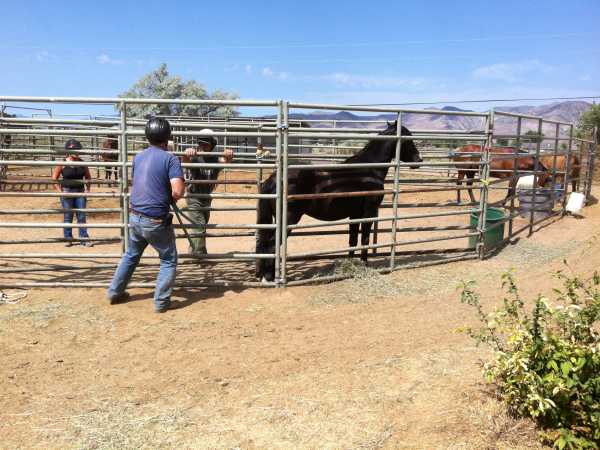
Occasionally a horse will react physically at first to being squeezed, and even get a leg through or over a panel. Everyone present has to simply get quiet, not raise their arms, and back away. The horse will usually get quiet and get himself out of the entanglement.
Whether or not the horse exhibits stress or agitation, he needs a short time to get settled in the squeeze before being approached. Then in most instances the best approach is toward the horse's shoulder, not walking directly at it but approaching quietly from an oblique angle.
Some ungentled horses will accept being approached on one side but not the other. Read the situation you have and make the least reactive approach.
any time you reach into a squeeze that contains a horse you must be careful not to get an arm between a panel post or rail and the horse. If the horse moves suddenly you have to be able to draw your arm straight out or you risk a serious injury!
Making reassuring contact with the horse starting at the shoulder.
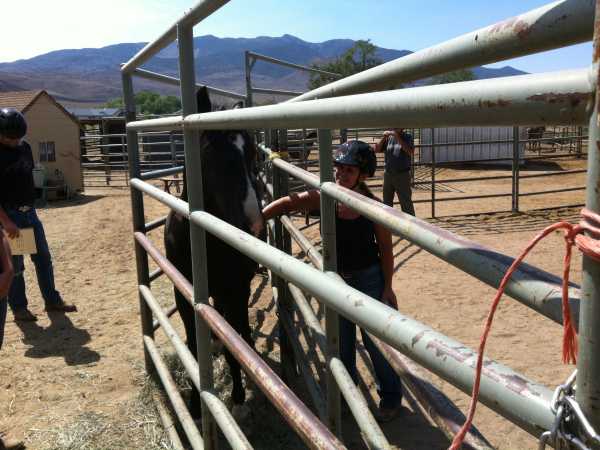
In many cases the person making initial contact can have a calming effect on the horse when the veterinarian approaches. The rope used to hold the panels together can also help keep the horse from backing through the chute. It should be low enough so that the horse doesn't back under it, but high enough so that the horse doesn't sit on it or trip over it.
Proper elevation of the twisted rope.
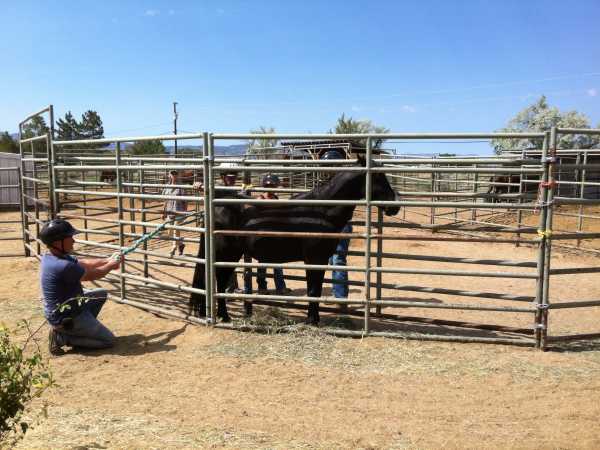
The initial contact person helps keep the horse calm when the veterinarian approaches.
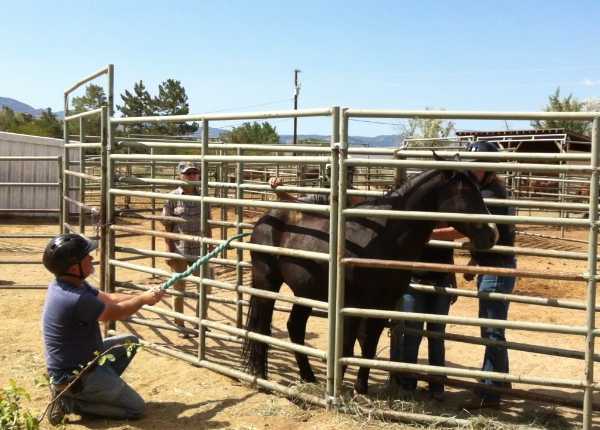
Since the horse can still move about somewhat inside the squeeze, it is often desirable for the veterinarian to use both hands - one to "follow" the movement of the horse and keep track of the jugular vein and the other to get the blood draw, administer sedation or an IV injection as may be warranted. Note that in taking this blood draw, the veterinarian is wearing a helmet to protect his head in the event the horse shoves the panel into him while bending over to draw blood.
The horse will typically reach a "quiet moment" where the needle can be injected without the horse overreacting. Patience and timing are of great value.
Making a safe and sane (and relatively calm) blood draw.
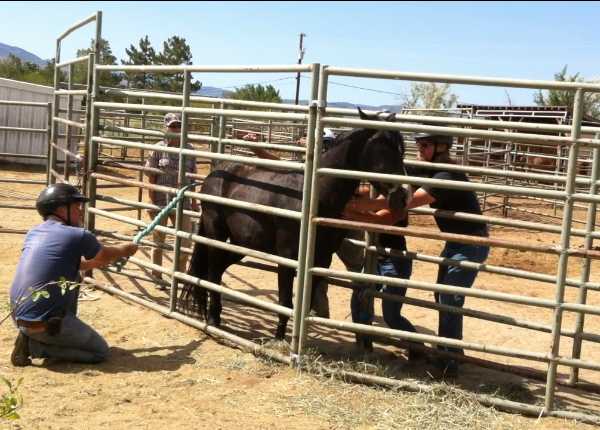
The training information presented in these information sheets and guides is offered for illustrative and volunteer refresher purposes only. It is not a substitute for actual hands-on training.
|
Press Back to return to the page which brought you here
Return to LRTC Wild Horse Mentors
Return to KBR Training Page
Go To  KBR Horse Net KBR Horse Net
| 




